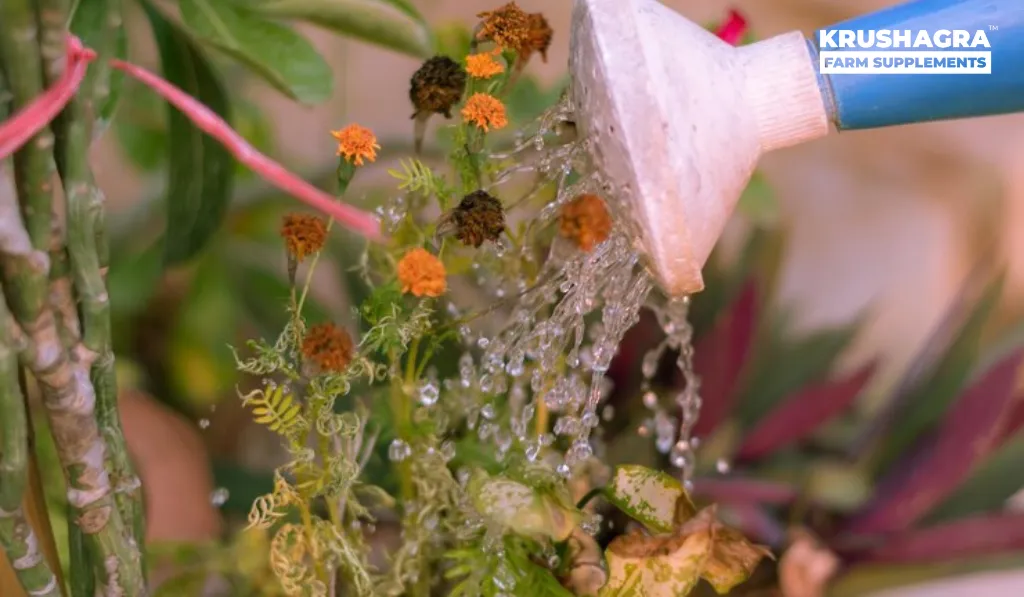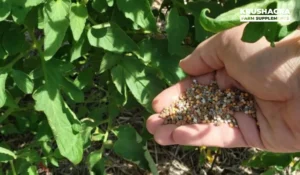The global economy, the fragrance business, and traditional medicine all rely heavily on medicinal and aromatic plants (MAPs). However, numerous pests and diseases, such as downy mildew, frequently pose a threat to the production of these plants. Downy mildew is a destructive plant disease that affects a variety of crops, including medicinal and aromatic plants. It is brought on by the oomycete pathogen Peronosporaceae. Although conventional chemical pesticides have been employed to address this disease, concerns have been raised about their detrimental effects on the environment and public health. As an eco-friendly downy mildew treatment alternative, biopesticides have gained popularity in recent years. In this article, we’ll look at how biopesticides can control downy mildew on aromatic and medicinal plants.
Understanding Downy Mildew: It’s important to comprehend the characteristics of downy mildew before exploring biopesticides. Downy mildew is caused by a pathogen that spreads through wind-dispersed spores and thrives in humid environments. Yellowish-green patches on the upper leaf surface and a downy, whitish growth on the underside of the leaves are some of the disease’s typical symptoms. These signs can result in distorted leaves, slowed plant growth, and ultimately reduced crop yields.
Challenges with Conventional Pesticides
For many years, downy mildew and other plant diseases have been controlled mostly by the use of conventional chemical pesticides. Although they produce speedy and efficient outcomes, their excessive use has caused a number of issues. Using traditional pesticides presents a number of difficulties, such as:
Pathogens may become resistant to pesticides, making them less effective over time. Detrimental effects on helpful insects, pollinators, and other non-target creatures. Dangers to human health from residues in the plant portions that were collected. Pollution of the environment caused by soil and water body contamination.
Benefits of Biopesticides
Biopesticides Biopesticides offer several benefits that make them an attractive and sustainable alternative to conventional chemical pesticides. Some of the key benefits of biopesticides include:
- Environmentally Friendly: Biopesticides are derived from natural sources, such as plants, microorganisms, or their byproducts. They have minimal impact on non-target organisms, including beneficial insects, pollinators, and wildlife. Unlike chemical pesticides, biopesticides break down more rapidly in the environment, reducing the risk of soil and water contamination.
- Low Toxicity to Humans and Animals: Biopesticides generally have low toxicity to humans and animals. They are often considered safer for farmers, consumers, and workers involved in the agricultural production process. This reduces the risk of acute and chronic health problems associated with pesticide exposure.
- Target Specificity: Biopesticides are often highly specific to the target pest or pathogen. They utilize natural mechanisms to disrupt the pest’s life cycle or suppress the disease-causing organism without harming beneficial organisms. This specificity minimizes the risk of developing resistance in pests, which is a common concern with chemical pesticides.
- Reduced Chemical Residues: Biopesticides leave fewer harmful residues on harvested crops, as they are biodegradable and break down into harmless byproducts. This is particularly important for crops used in food, medicinal, and aromatic industries, where chemical residues may adversely impact product quality and consumer health.
- Residue Exemption or Lower Regulatory Hurdles: In some countries, biopesticides enjoy regulatory advantages, such as residue exemptions or reduced registration requirements. This can simplify the approval process and encourage the adoption of biopesticides by farmers.
- Compatible with Integrated Pest Management (IPM): Biopesticides can be effectively integrated into IPM strategies, combining various pest control methods for better and more sustainable crop protection. Their compatibility with other biological control agents, cultural practices, and physical measures enhances overall pest management.
- Long-term Sustainability: By using biopesticides, farmers can contribute to the long-term sustainability of agriculture. Reducing the reliance on synthetic chemicals helps preserve natural ecosystems, biodiversity, and soil health, ensuring the continuity of crop production for future generations.
- No Pre-Harvest Interval (PHI) Restrictions: Unlike chemical pesticides that often have pre-harvest intervals (PHI) during which treated crops cannot be harvested, many biopesticides do not have such restrictions. This flexibility in application allows for timely disease and pest management without affecting harvest schedules.
- Residue Management in Export Markets: For crops destined for export markets, biopesticides can be advantageous. They often comply with the stricter residue regulations of foreign countries, facilitating trade and ensuring that crops meet international quality standards.
- Contribution to Organic Farming: Biopesticides play a crucial role in organic farming practices. They align with the principles of organic agriculture, promoting ecological balance, biodiversity conservation, and the elimination of synthetic chemicals. In conclusion, biopesticides offer numerous benefits, making them an essential tool in sustainable agriculture. As awareness of environmental and health concerns increases, the adoption of biopesticides is likely to grow, contributing to the overall improvement of crop protection practices worldwide.
Challenges and Limitations of Biopesticides:
While biopesticides have many advantages, there are also difficulties and restrictions to take into account.
Efficacy: Multiple applications could be required if biopesticides are to effectively suppress downy mildew.
Stabilizing and manufacturing biopesticides can be difficult, which affects their shelf life and farmer-friendliness.
Knowledge and adoption: To effectively manage disease, farmers need to be educated and trained on the right use of biopesticides.
Conclusion:
In conclusion, biopesticides are becoming more popular as a sustainable and environmentally responsible alternative to traditional chemical pesticides for controlling downy mildew in medicinal and aromatic plants. Despite obstacles, continued research and development is probably going to increase the effectiveness and usefulness of biopesticides, further encouraging their usage in agriculture. Farmers may protect their crops, the environment, and the ongoing availability of essential medicinal and aromatic plants by including biopesticides into a well-designed pest control strategy.






